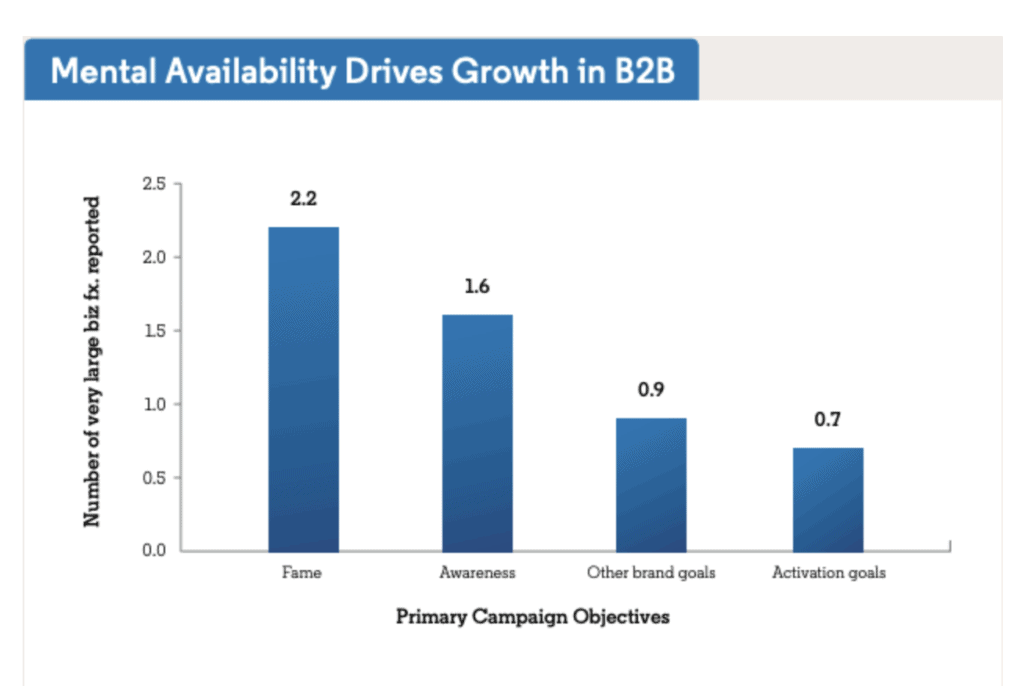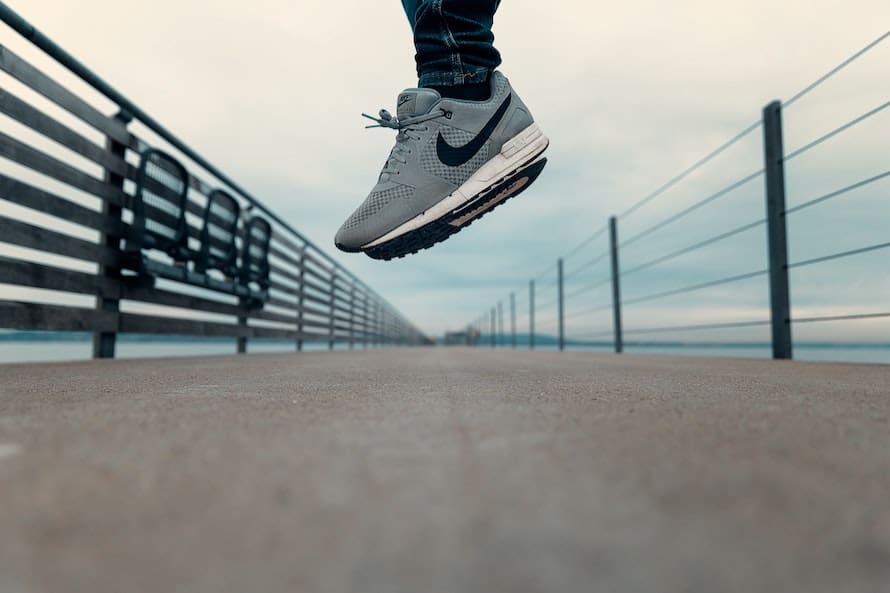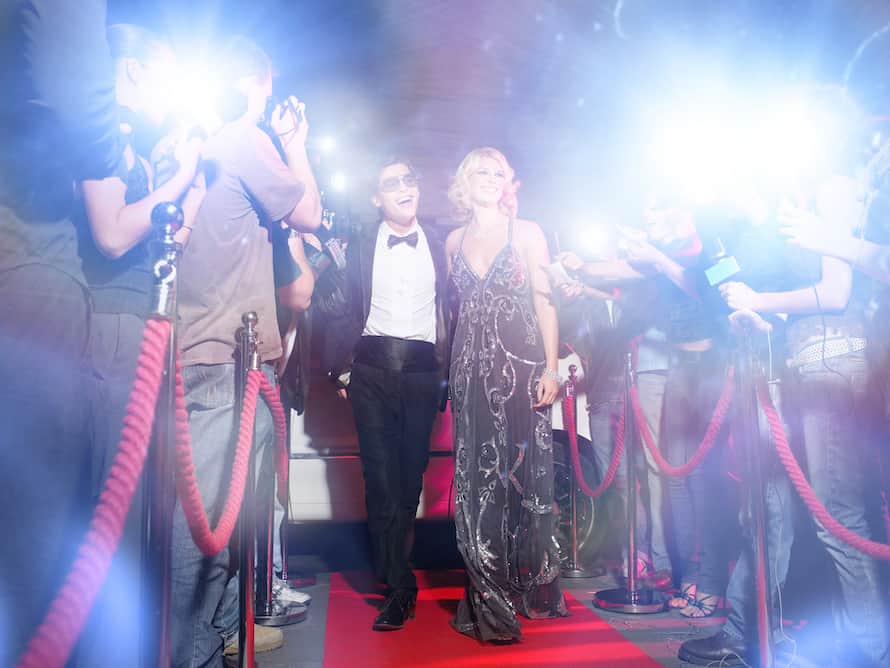Chasing after fame may seem like a waste of time, an empty attempt to gratify vanity.
But if you’re trying to grow a B2B brand, the truth is that it’s actually an excellent way to spend your time—and marketing dollars.
In this post, we’re going to look at why famous B2B brands grow faster and how your goals need to change to go past brand awareness and into fame.
Let’s get started!
Why should you want your B2B brand to be famous?
Here’s the truth: brand awareness is just about the most basic thing you can achieve for your brand.
It will get you sales, yes—but will it get you massive growth? Will it help you become the go-to brand in your customers’ minds? Not unless you push beyond basic awareness and into fame.
The reason is that customers are aware of plenty of brands. They’ve heard of thousands, probably can recall hundreds, but they will buy from only a tiny percentage of those. You want your brand to be one of those in the tiny percentage.
Maybe you’re thinking, “But aren’t growing brand awareness and becoming famous the same thing?”
To a degree, they are—but it’s important to recognize that there’s a significant mental shift that has to take place between wanting to grow brand awareness and wanting your brand to be famous. Marketers that want everyone to know their brand’s name think bigger. They experiment more. They go after PR opportunities with more oomph.
Growing brand awareness is safe. Getting famous is ambitious.
What does the data say about brand awareness versus brand fame?
As with any claim, it’s essential to look at the data behind it.
LinkedIn’s B2B Institute did a study on brand fame recently that offers some crucial insights.
Here’s a brief overview of their findings:
“Binet and Field’s study proves B2B marketers, in particular, need to aim higher where their brands are concerned. When looking at the impact of different B2B strategies and how they influence the bottom line, they found B2B marketing strategies that focused on driving brand awareness, as opposed to activating leads, delivered more than double the significant business effects as those that didn’t focus on brand at all. Campaigns which focused on achieving brand fame as a strategy were 3x as likely again to drive large business effects, such as increases in sales, revenues, and profits.”
So going after brand fame works.
This has to do with something called “mental availability.” This is how quickly and easily your brand comes to mind for your customer at critical moments, like when they’re ready to make a purchase. And strategies that are focused on achieving B2B fame increase mental availability.

Another important concept that helps explain why brand fame is so desirable, as the study’s authors explain, is “salience.”
A brand that has a high degree of salience will come to mind more quickly when a customer is considering a purchase or starting the research phase. For example, Salesforce has a very high degree of salience in the CRM market. Memories of the brand also come to mind more quickly when this is the case, which can have a huge influence on a brand’s sales.
B2C brands know this, which is why so many of them put tons of time, effort, and money toward being seen everywhere. The billboards, the digital campaigns, the branded content, the video marketing—the point is to become so well-known that customers think of you without even really thinking. Brand names like Oreo, Pringles, Crayola, and Kleenex have all achieved this level of salience—this level of fame.
But for whatever reason, B2B brands (and B2B marketers, too) have long assumed that B2B purchases are much more rational than B2C. The thinking goes that B2C buyers don’t make a business purchase simply because they know the brand—they make purchases based on price, availability, quality, brand reputation, etc.
While that may be true to a degree, it’s time to start realizing that B2B purchases are often influenced by many of the same factors as B2C.
Consider a company that’s looking for payroll management. The first brand they think of will probably be ADP (incidentally, that’s also the first Google result that comes up when you search “payroll management system”).
They might continue to search, and in the end, maybe they’ll even choose someone different. But 99 other B2Bs that were also looking for payroll management that day did choose ADP, because it’s the first company that came to mind when they started thinking about finding a provider.
Features, pricing, etc. do matter in B2B purchases. But brands that are famous have such a large head start in the minds of potential customers that unless the famous brand is really lacking when it comes to those factors—which is unlikely—it’s going to be difficult for other, less well-known brands to overtake them in terms of market share.
How do B2B brands get famous?

Being famous means being well-known outside your industry as well as within it, and becoming a part of the general culture. This requires different tactics than raising brand awareness does.
There are lots of things a company can do to raise brand awareness: better content marketing, B2B PR campaigns, improving their digital advertising, participating in events, elevating executives to thought leaders. These things will all raise brand awareness and go a long way toward making your brand more well-known with potential customers.
However, to become famous, you need to take a very different approach.
Since the purpose is to become well-known among the general public, you need marketing tactics that will get the attention of a broad range of people. IBM doesn’t just target B2B decision-makers—they target everyone, which is why all of us today know IBM as a brand.
This is the opposite of how you raise brand awareness and increase conversions, which is to identify your niche and then target them mercilessly.
Both approaches are effective, but they give you different results. Getting famous supports your brand in the long run and will help you grow exponentially over time; raising awareness and increasing conversions will grow your brand gradually, but can offer short-term boosts, which are also important.
To get an idea of what marketing to a huge audience looks like, think of Super Bowl commercials. Half of them barely even mention a product or service—instead, they’re aimed at getting the attention of as many people as possible, whether through being funny, outrageous, bold, or deeply emotional.
That’s the kind of thing that makes a brand famous.
If you’re ready to change your thinking about B2B branding and take the plunge into fame, get in touch!




